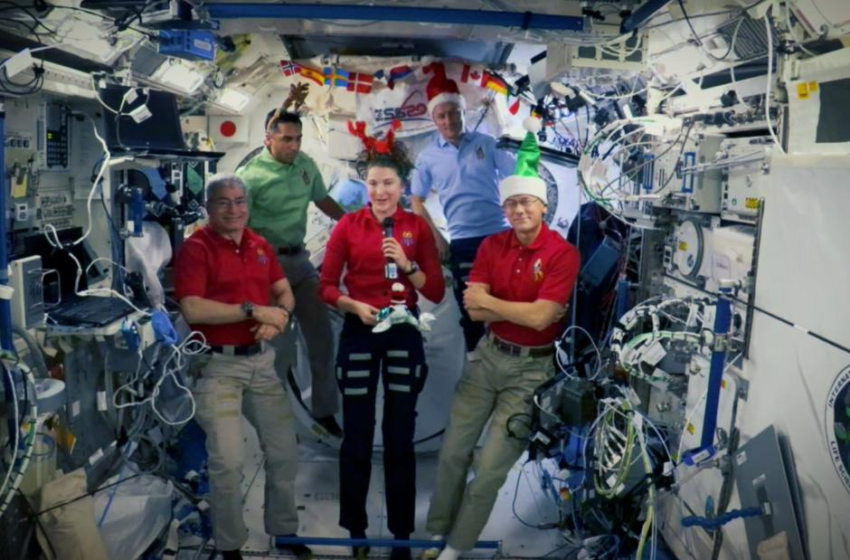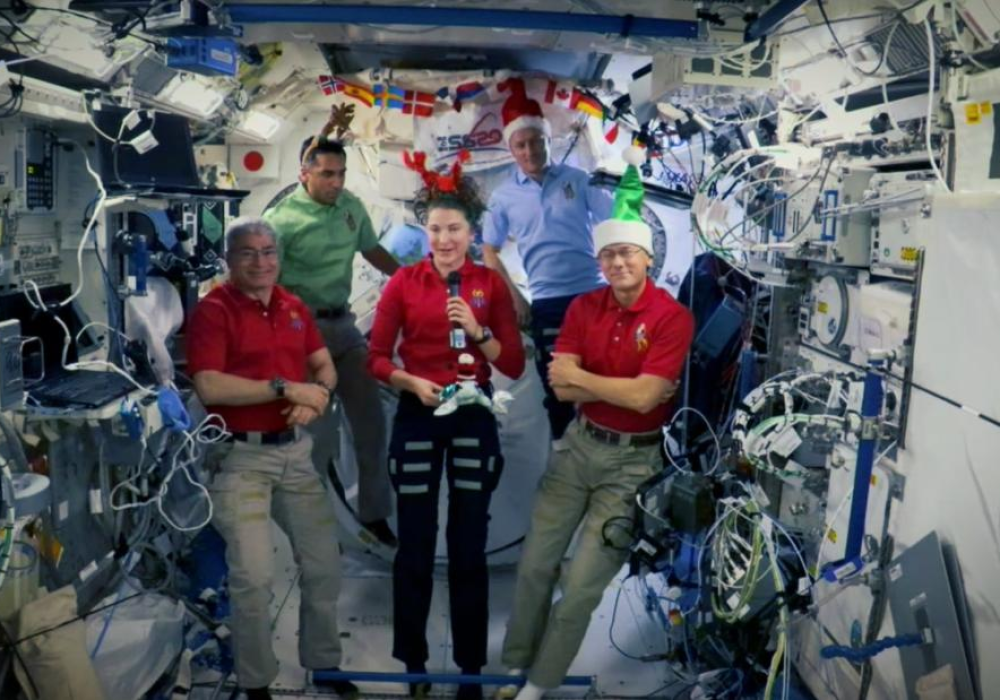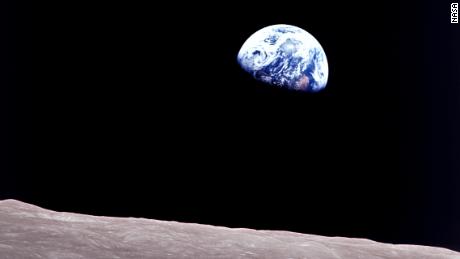The orbiting laboratory is hosting seven crew members throughout the holiday season.
The international crew includes Russian cosmonauts Anton Shkaplerov and Pyotr Dubrov; NASA astronauts Raja Chari, Dr. Thomas Marshburn, Kayla Barron and Mark Vande Hei; and European Space Agency astronaut Matthias Maurer.
Maurer joked that the crew will be able to celebrate Christmas together 16 times as the space station orbits the Earth.
“There’s a new family here in space, so getting to spend Christmas as a family with this family is what I’m looking forward to,” Chari said.
Typically, the entire crew will gather for a special meal and call home to talk with friends, family and loved ones.
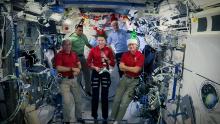

They will also ring in the new year together.
“We’re privileged to have the perspective of seeing so many countries, we can go from one side to the other in just a few minutes,” Marshburn said. “It truly gives us a feeling of unification for all human beings around the world.”
“We get to see the sunrise many times a day, so thinking about the fact that people are waking up to a new year each time we see that sunrise is pretty cool,” Chari added.
Maurer is eager to begin some of the science experiments that arrived on the cargo vehicle and said it “will be a splendid start to the new year.”
Holidays away from Earth
Astronauts have marked the tradition of celebrating holidays in space since the days of the Apollo mission, when the Apollo 8 crew famously shared their Christmas Eve message in a live television broadcast in 1968 by taking turns reading from the Book of Genesis in the Bible.
How these holidays are marked and celebrated is up to each individual crew, and space veterans tend to share suggestions and ideas with rookies before they go up, NASA astronaut Dr. Andrew Morgan told CNN in 2020.
Morgan spent the entirety of the holiday season on the space station in 2019 alongside crewmates Jessica Meir, Christina Koch, Alexander Skvortsov, Oleg Skripochka and Luca Parmitano.
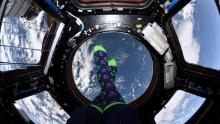

In the days leading up to the holiday, Morgan and his crew played Christmas music throughout the station and had classic holiday movies playing to create a festive atmosphere. The crew also used a projector with a recording of a burning Yule log to make it look like they had a cozy fireplace on the space station, he said.
Given the international nature of their crew, they actually celebrated Christmas twice: Christmas on December 25 and Russian Orthodox Christmas on January 7.
If your idea of planning ahead is buying Christmas gifts on Black Friday, it’s very different for astronauts thinking ahead to their space mission if it includes holidays.
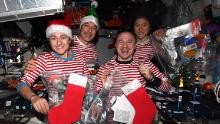

“We had to think about a year or more in advance to make sure we purchased, packed and kept these gifts a secret the entire time,” Morgan said.
Morgan knew that Parmitano enjoyed a special Russian treat called chocolate cheese, which is essentially a heavy chocolate fudge, so Morgan saved some to include with Parmitano’s present. Morgan also gave every crewmate a harmonica in their stocking so they could have a harmonica band on board.
Morgan was missing his family and thinking about the traditions he would normally share with them. One of his favorites is spending Christmas Eve only lit by candlelight. He grew up with this tradition and continues it with his family to this day.
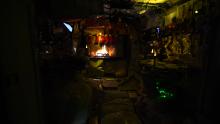

When he woke up on Christmas morning in the space station, all of the lights were turned off in the modules, a normal occurrence while the astronauts are asleep.
But Koch had taken small flashlights and covered them with gold-colored tape to make them look like little burning candles. They were everywhere — in the lab, the crew quarters, the galley where the crew eats.
“When I saw that, I actually got choked up with nostalgia,” Morgan said. “It made me think about missing my family during Christmas, but also just the thoughtfulness of Christina’s gesture. She had paid attention to that little detail, and it was extremely meaningful. It’s one of the many memories I cherish from my time on the space station.”
Many happy New Years
The space station operates on Greenwich Mean Time to stick to a schedule. The crew witnesses 16 sunrises and 16 sunsets each day as they orbit the Earth at 17,500 miles per hour (28,000 kilometers per hour).
So when it comes time to say “Happy New Year,” the crew has many chances to celebrate. The astronauts make calls down to each mission control as the New Year arrives in their time zone.
New Year’s is a much bigger holiday than Christmas for the Russian crew, so the entire crew came together to enjoy a large meal and toast to the year ahead.
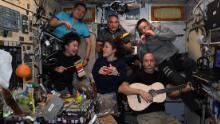

The other big tradition involves watching a Russian film, which, when translated essentially means, “The Irony of Fate.” The 1976 Soviet romantic comedy television film has “a little bit of a bizarre plot about a gentleman who becomes so drunk, he ends up in Leningrad and doesn’t know how he got there,” Morgan said.
It’s a cultural phenomenon to watch the movie on New Year’s Eve in Russia, so it is played in the Russian segment to honor the tradition.
“To experience that with our Russian crew mates was extra special,” Morgan said. “That exchange of those traditions and experiencing each others’ holidays and sharing that with each other across an international crew, that will be the thing I take away from that experience. It embodies everything good about international cooperation and sharing traditions across different countries.”

